UPSC Exam > UPSC Notes > Geography for UPSC CSE > Major Mountains of the world
Major Mountains of the world | Geography for UPSC CSE PDF Download
Major Mountain Ranges of the World – The Ultimate List for UPSC
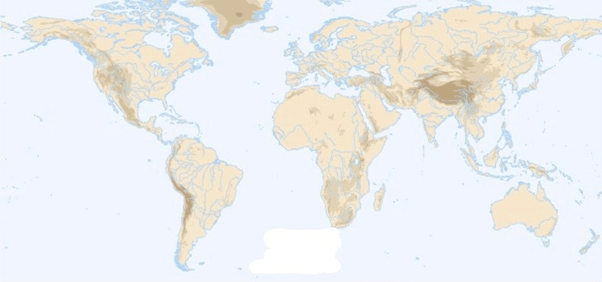
Ridge
- Mountain ridges refer to mountains that originate as a result of local folding and faulting.
- Generally, the slope on one side of the ridge is steep in contrast to the moderate slope on the other side (in the case of the Himalayas, the southern slope is steeper compared to the northern slope).
- In some cases, a ridge may have a symmetrical slope on both sides.
Mountain range
- It refers to a series of ridges that originated in the same age and underwent the same processes.
- The most prominent or characteristic feature of mountain ranges is their long and narrow extension.
- For example, the Himalayas is a mountain range with Himadri ridge, Himachal ridge, and Shiwalik ridge.
Mountain System
- A group of mountain ranges formed in a single period, similar in their form, structure, and extension, is termed a mountain system.
- Examples are the Basin Range of Nevada (USA), the Rocky mountain system of North America, and the Appalachian.
Mountain Chain
- It consists of mountain ranges that differ in size and period of formation.
Cordillera
- Cordillera is a community of mountains that includes ridges, ranges, mountain chains, and mountain systems.
- The best example is the Western Cordillera in the western part of North America.

Longest Mountain Ranges
1. The Andes – 7,000 km
2. The Rockies – 4,830 km
3. The Great Dividing Range – 3,500 km
4. The Transantarctic Mountains – 3,500 km
5. The Ural Mountains – 2,500 km
6. The Atlas Mountains – 2,500 km
7. The Appalachian Mountains – 2,414 km
8. The Himalayas – 2,400 km
9. The Altai Mountains – 2,000 km (1,243 mi)
10. The Western Ghats – 1,600 km
11. The Alps – 1,200 km
12. Drakensberg – 1,125 km
13. The Aravalli Range – 800 km
The Andes
- The Andes is the most extended continental mountain range in the world.
- The Andes is the world’s highest mountain range outside of Asia, with an average height of 4000 m.
- The highest peak is Mount Aconcagua (6,962 m) (volcanic origin, but now it’s dormant).
- The world’s highest volcanoes are in the Andes.
- Ojos del Salado (6,893 m) (active volcano) on the Chile-Argentina border is the highest volcano on earth.
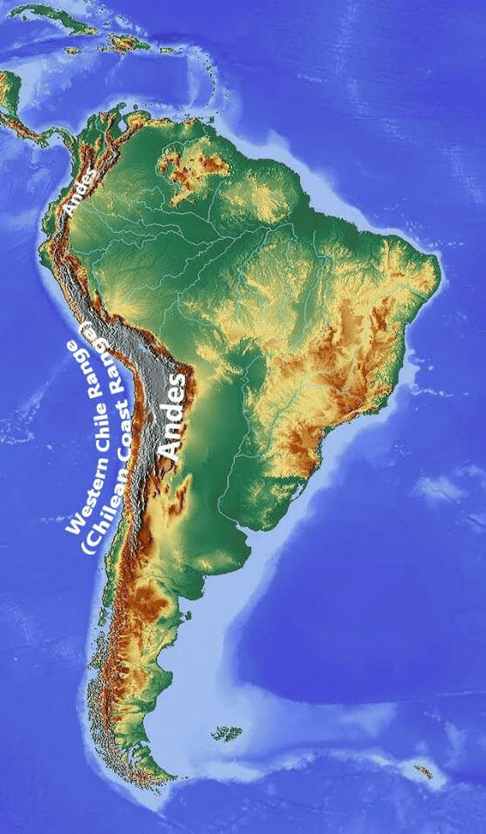
The Rockies
- Rocky Mountain range forms a part of the American Cordillera.
- The American Cordillera is a chain of mountain ranges (cordilleras) that consists of an almost continuous sequence of mountain ranges that form the western backbone of the Americas and Antarctica.
- It is also the backbone of the volcanic arc that forms the eastern half of the Pacific Ring of Fire.
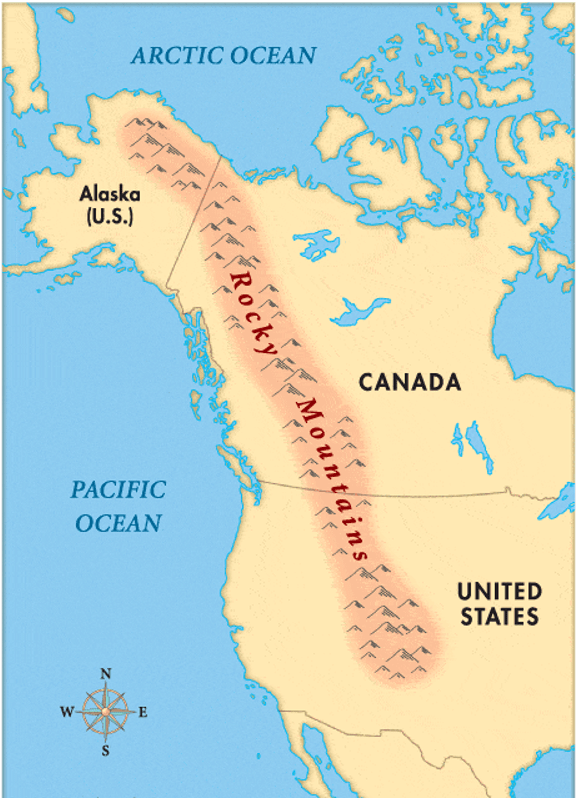
North Cordillera
- The ranges of the Cordillera from Mexico northwards are collectively called the North American Cordillera.
- They include the Alaska Range and the Brooks Range in Alaska, main belt of the Rocky Mountains along with the parallel Columbia Mountains, the Sierra Nevada, the Cascades, and various small Pacific coastal ranges.
- In Mexico, the Cordillera continues through the Sierra Madre Occidental and the Sierra Madre Oriental.
South Cordillera
- The Cordillera continues through the mountain ranges of Central America in Guatemala, Honduras, Nicaragua, Costa Rica, and Panama and becomes the Andes Mountains of South America.
- The Andes, with their parallel chains, continue to the very tip of South America at Tierra del Fuego.
- The Cordillera continues along the Scotia Arc before reaching the mountains of the Antarctic Peninsula.
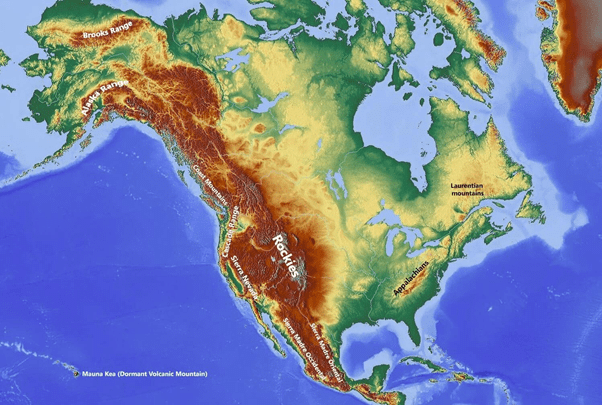
The Cascade Range
- The Cascade Range or the Cascades is a major mountain range of western North America.
- The Cascades (Cascade volcanoes) are part of the Pacific Ocean’s Ring of Fire.
- They are made up of a band of thousands of very small, short-lived volcanoes.
- The Cascade Range has few strikingly large volcanoes, like Mount St. Helens.
- The volcanoes and earthquakes in the Cascades arise from a common source: subduction, where the dense Juan de Fuca oceanic plate plunges beneath the North American Plate.
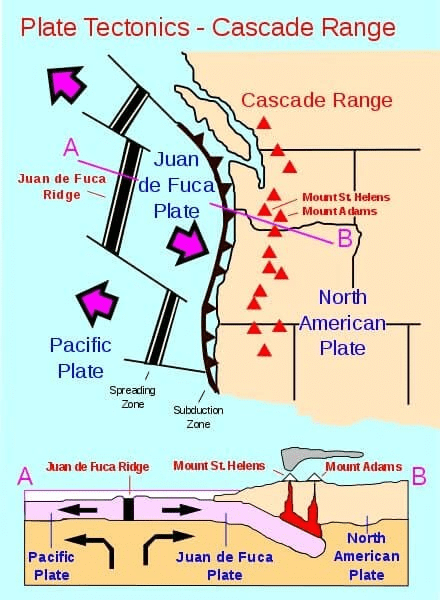 Cascade Volcanism (Wikipedia Commons)
Cascade Volcanism (Wikipedia Commons)
The Great Dividing Range
- The Great Dividing Range, or the Eastern Highlands, is Australia’s most substantial mountain.
- It is also known as the Australian Alps and was formed due to rifting.
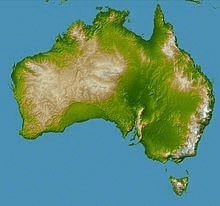

Transantarctic Mountains
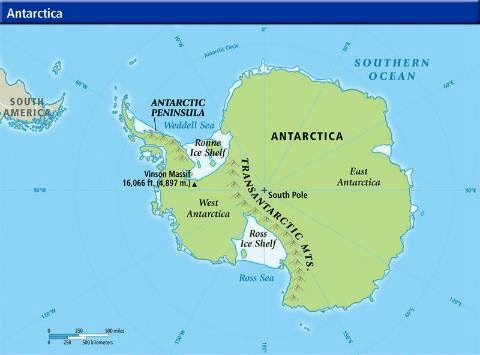 Transantarctic Mountains (krill oil [CC0], via Wikimedia Commons)
Transantarctic Mountains (krill oil [CC0], via Wikimedia Commons)
The Ural Mountains
- Mountain range that runs approximately from north to south through western Russia, from the coast of the Arctic Ocean to the Ural River and northwestern Kazakhstan.
- They are formed due to the Continent-Continent collision of supercontinent Laurussia with the young and weak continent of Kazakhstan.
- Their eastern side is usually considered the natural boundary between Europe and Asia.
- Since the 18th century, the mountains have been a major mineral base of Russia.
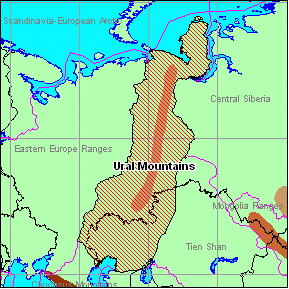
Atlas Mountains
- Mountain range across the north-western stretch of Africa extending about 2,500 km (1,600 mi) through Algeria, Morocco, and Tunisia.
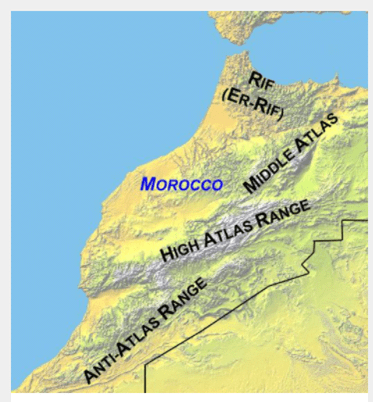
- The highest peak is Toubkal (4,165 meters) in southwestern Morocco.
- These mountains were formed when Africa and Europe collided.

The Himalayas
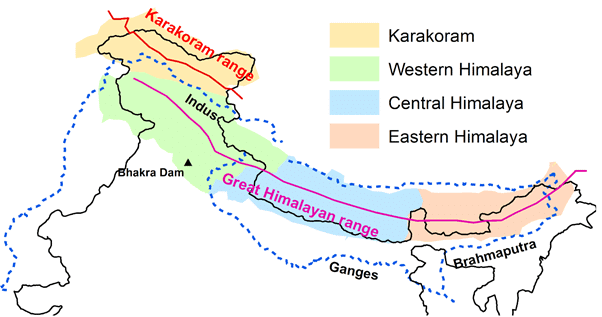
- The Himalayan range is home to the planet’s highest peaks, including the highest, Mount Everest.
- Its western anchor, Nanga Parbat, lies just south of the northernmost bend of the Indus river, its eastern anchor, Namcha Barwa, just west of the great bend of the Brahmaputra river (Tsangpo river).
- The range varies in width from 400 kilometers in the west to 150 kilometers in the east.
Geology
- The Himalayas are among the youngest mountain ranges on the planet and consist mostly of uplifted sedimentary and metamorphic rock.
- According to the modern theory of plate tectonics, their formation is a result of a continental collision or orogeny along the convergent boundary between the Indo-Australian Plate and the Eurasian Plate.
- The Arakan Yoma highlands in Myanmar and the Andaman and Nicobar Islands in the Bay of Bengal were also formed as a result of this collision.
Impact on climate
- The Himalayas are believed to play an important part in the formation of Central Asian deserts, such as the Taklamakan and Gobi.
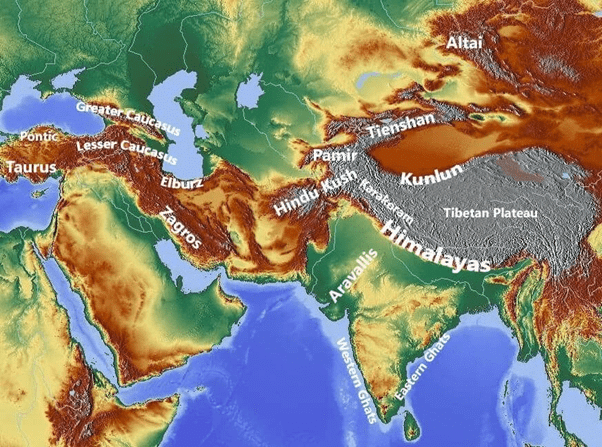
The Alps
- The mountains were formed as the African and Eurasian tectonic plates collided.
- Extreme folding caused by the event resulted in marine sedimentary rocks rising by thrusting and folding into high mountain peaks such as Mont Blanc (4,810 m) (French–Italian border).
- The Alpine region area contains about a hundred peaks higher than 4,000 m, known as the four-thousand.
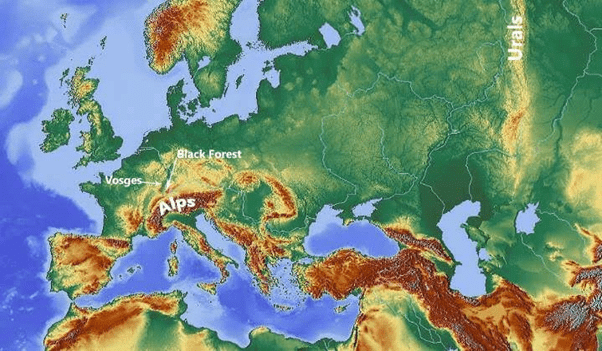
Highest Mountain Peaks
- The highest known mountain on any planet in the Solar System is Olympus Mons on Mars (~26 km in elevation). It is also the highest active volcano in the Solar System.
 Highest Mountain of each continent (The other name of Mount McKinley is Mount Denali.)
Highest Mountain of each continent (The other name of Mount McKinley is Mount Denali.)
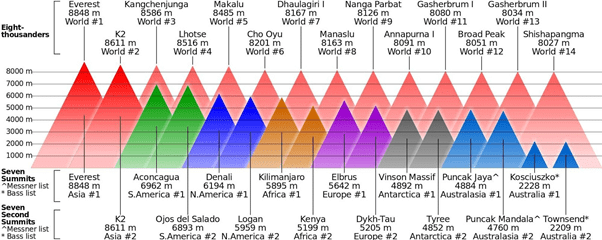 Highest Mountains on Earth
Highest Mountains on Earth
The document Major Mountains of the world | Geography for UPSC CSE is a part of the UPSC Course Geography for UPSC CSE.
All you need of UPSC at this link: UPSC
|
175 videos|472 docs|197 tests
|
FAQs on Major Mountains of the world - Geography for UPSC CSE
| 1. What are some of the major mountain ranges in the world? |  |
Ans. Some of the major mountain ranges in the world include the Himalayas, Andes, Alps, Rockies, and the Great Dividing Range.
| 2. Which mountain range is considered the highest in the world? |  |
Ans. The Himalayas, located in Asia, are considered the highest mountain range in the world. Mount Everest, the highest peak, is part of the Himalayas.
| 3. What is the significance of mountain ranges in relation to the environment? |  |
Ans. Mountain ranges play a crucial role in the environment. They act as barriers, affecting weather patterns and precipitation. They also serve as habitats for various flora and fauna, contain important water sources, and contribute to the overall biodiversity of a region.
| 4. How do mountain ranges impact human populations and civilizations? |  |
Ans. Mountain ranges have both positive and negative impacts on human populations. They provide resources such as minerals, timber, and water, which support livelihoods and economic activities. However, they can also pose challenges for transportation, agriculture, and communication due to rugged terrains and harsh climatic conditions.
| 5. Are there any major mountain ranges in South America? |  |
Ans. Yes, the Andes mountain range is located in South America. It stretches along the entire western coast of the continent, making it the longest mountain range in the world. The Andes are home to several famous peaks, including Aconcagua, the highest mountain outside of Asia.

|
Explore Courses for UPSC exam
|

|
Signup for Free!
Signup to see your scores go up within 7 days! Learn & Practice with 1000+ FREE Notes, Videos & Tests.
Related Searches


















